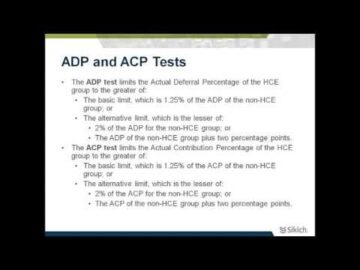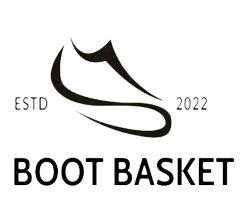
One of these applications is Dynamics 365 Business Central, which helps small and mid-size companies house all their business operations, including finance, manufacturing, sales, shipping, and more. Accounting software is crucial in helping organizations run their day-to-day business processes. It allows business leaders to keep their finger on the pulse of their company’s financial health. The integrated nature of ERP — being able to see all aspects of your business together in one place and connect them with each other — could lead to other improvements, as well.
With so many accounting software solutions available to small and medium sized businesses, it can be tough to know exactly what you need. SAP Business One Professional has good features and flexibility overall, but is designed as an “old school” enterprise resource planning (ERP) platform. It may be too complex for many users especially small to midsize businesses (SMBs).

While part of this movement could be blamed by the ERP vendors of the world attempting to upsell more capabilities, most businesses are more than satisfied using a unified system with end-to-end capabilities. Men’s grooming product maker Fulton & Roark successfully implemented enterprise resource planning to better track inventory and financial data. Like many other businesses, the North Carolina company used spreadsheets to track inventory and accounting software to record financial data. ERP applications can help a corporation become more self-aware by linking information about production, finance, distribution, and human resources together. Because it connects different technologies used by each part of a business, an ERP application can eliminate costly duplicates and incompatible technology. The process often integrates accounts payable, stock control systems, order-monitoring systems, and customer databases into one system.
ERP history: The rapid evolution of ERP
A complete accounting system not only records financial transactions, it also includes reporting and analytics capabilities. These prebuilt dashboards help finance leaders make sense of their organization’s financial health and drill down for more detailed information. These dashboards measure critical financial KPIs in real time, including current ratio, quick ratio, debt-to-equity ratio, net working capital, and inventory turnover—just to name a few. Accounting software is a key component of an enterprise resource planning (ERP) system. Any business that strives for accurate data collection can benefit from EPR systems, including all businesses that wish to track sales, inventory and finances. ERP is especially popular in manufacturing and production-based fields, but it is now used in areas as wide-ranging as healthcare, e-commerce and nonprofit work.
It depends on a wide range of factors like user count, support needs, functionalities, and more. The ability to compare current results with previous ones right from the dashboard is a great way to help users understand how their business is doing. You can view different graphs and pie charts to see how your business is doing, while even enabling multiple dashboards for a more in-depth look into your data. The plans are quote-based and are tailor-made and personalized for individual requirements. However, when it comes to ERP systems, there are many new ones on the market, and choosing the best new technology might be a step by step process depending on your needs.
More robust security resources
The installation and maintenance of the hardware and software is your staff’s responsibility.
It may no longer make sense to maintain inventory in, or send out orders from, the founder’s garage. New resources, a mile away, a state away, half a world away, are now handling aspects of the business. To determine the best ERP systems in the market, Forbes Advisor considered over 20 of the leading providers in the space and narrowed it down to the top 16 providers. These were then analyzed across five primary categories for a total of 25 different metrics. We then weighted each of the overarching categories based on what matters most to businesses.

Each business unit works independently, and the smooth transfer of information between the departments is challenging. Improper enterprise resource planning leads to a loss of precious time, a lack of collaboration, and low business flexibility. NetSuite is an all-in-one business management suite and ERP platform that encompasses ERP applications, financials, CRM, and ecommerce for more than 18,000 customers.
Are there any free ERP software options available?
Since ERP systems are comprehensive across an enterprise, their management often involves a partnership with the CFO as well as the CIO, COO, and other key executive leaders. Enterprise resource planning (ERP) refers to the systems organizations use to manage their core business operations and streamline their information. ERP solutions offer real-time insights and fast access to data across all departments, such as sales, marketing and finance. Another key difference between ERP solutions and accounting software is if you’re managing finances for a manufacturing business in particular. An ERP solution can help businesses manage production and manufacturing resource planning along with supply chains and shipments.
- By utilizing an ERP with built-in accounting functionality, businesses are able to be more efficient by having all of their vital data in one place.
- It is a centralized software that combines accounting, manufacturing and procurement systems.
- There are several actions that could trigger this block including submitting a certain word or phrase, a SQL command or malformed data.
- The next-generation, cloud-based, and modern ERP solutions support the new industry dynamics while providing the ability to reduce support time to enable organizations to respond quickly to volatile markets and industry trends.
New MRP II software integrated accounting and finance, sales, purchasing, inventory, and manufacturing planning and scheduling – providing the manufacturer with an integrated system. With an integrated ERP system, companies find that their transaction error rates decline, while many tasks that formerly required manual effort are now entirely automated. Also, subject to security issues, employees can access information in other departments that was previously difficult to obtain, or only with the help of special programming by the IT department.
Video: ERP vs. Accounting Software
This put ERP within reach of smaller companies, in turn spurring growth and profitability. IDC estimates that use of cloud-based ERP will more than double between 2019 and 2024. We do not sell a business opportunity, “get rich quick” program or money-making system. We believe, with education, individuals can be better prepared to make investment decisions, but we do not guarantee success in our training.
By getting both systems ‘talking’ to one another, you can automate your invoice delivery, post payments to your ledgers automatically, and simplify your acceptance of digital payments. Another of these applications is Dynamics 365 Finance and Supply Chain Management (F&SCM). F&SCM is tailor-made to help mid-size and enterprise companies manage product demand, stock, logistics, and manufacturing.
Revolutionize Business Operations with ERP Integrations
The next-generation, cloud-based, and modern ERP solutions support the new industry dynamics while providing the ability to reduce support time to enable organizations to respond quickly to volatile markets and industry trends. The ERP software system shown here illustrates enterprise resource planning use cases for sourcing and procurement, as well as sales. Typical ERP modules also address finance, manufacturing, and supply chain, among other applications. Nearly every ERP will need to include accounting capabilities, on top of the other non-financial tools in order to provide a true enterprise system. Meanwhile, an accounting system will just handle the financial management, planning, and budgeting your organization needs.
Stampli Invoice Management System Now Integrates With Over 70 … – The Fintech Times
Stampli Invoice Management System Now Integrates With Over 70 ….
Posted: Thu, 20 Jul 2023 07:00:00 GMT [source]
Through Acumatica’s robust reporting, you’ll also be able to monitor essential KPIs, such as profitability, revenue, operating costs, working capital and customer satisfaction. Cloud solution service providers have large, full-time teams that are exclusively dedicated to proactively monitoring and staying current with cloud security issues and threats, 24 hours a day. Cloud-based technology was born in the last decade and developed, as a core principle, with an entirely different mindset and understanding of not only what was possible but what was needed to be successful for ERP platforms. Next-generation technologies, like artificial intelligence (AI), help cloud-based systems rapidly improve their capabilities with no need for periodic updates, unlike your legacy system.
Built for the digital age, today’s ERP cloud embraces mobile, social, analytics, and the latest emerging technologies. The next generation of young workers have grown up with seamless technology that is mobile, easy to use, and always-on. No company that continues to rely purely with on-premises technology will be able to recruit top talent, regardless of age.
ERP Systems by Business Size
There are various use cases and each organization may use it differently based on specific requirements. This means sales teams can get real-time information on available how to find the book value of a company merchandise from the system, without having to consult another department. If it is available, the product is packaged, delivered and shipped to the customer.
Contractor Accounting Software Market Size [2023-2029 … – University City Review
Contractor Accounting Software Market Size [2023-2029 ….
Posted: Mon, 31 Jul 2023 10:07:39 GMT [source]
Other methods for ERP integration include ESB (enterprise service bus) and iPaaS (integration platform-as-a-service). IPaaS, which offers a cloud-based approach, is a very popular option for modern businesses. IPaaS platforms can rapidly sync on-premise or cloud-based ERP with SaaS applications from the same vendor or third-parties. Many businesses are finding that traditional accounting software of the old is becoming less and less prevalent as businesses turn to fully integrated business management software to meet their needs.
Built for manufacturing processes and growth, Epicor helps businesses and manufacturers use data and automation to stay or increase profitability. Deltek is an ERP system that focuses on delivering business solutions to clients and help them automate and connect project life cycles that fuel their business. It lets you holistically manage, develop, deliver, and measure every aspect of your business. What makes it stand apart from many of its counterparts is that it offers both cloud and on-premise hosting options.
But growth comes with big decisions like determining how and choosing when you’ll make business management technology investments. Enterprise resource planning (ERP) solutions are critical tools for helping businesses manage that next level of growth. Dear Systems is a cloud ERP software solution that helps businesses manage supply chains, connect to sales channels, and scale operations.



